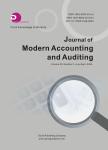Relational Capital and Open Innovation: Two Cases of Successful Italian Companies
Relational Capital and Open Innovation: Two Cases of Successful Italian Companies作者机构:Polytechnic University of Marche Ancona Italy GEA Management Consulting Ancona Italy
出 版 物:《Journal of Modern Accounting and Auditing》 (现代会计与审计(英文版))
年 卷 期:2011年第7卷第5期
页 面:474-486页
学科分类:120202[管理学-企业管理(含:财务管理、市场营销、人力资源管理)] 12[管理学] 1202[管理学-工商管理] 1201[管理学-管理科学与工程(可授管理学、工学学位)]
主 题:intangible assets relational capital innovation case study analysis
摘 要:Praxis and doctrine agree on the importance of innovation for the competitiveness and profitability of the firm. Innovation is considered as a leverage to start a virtuous circle that improves company performance and, consequently, reduce financial constraints for its development. Being creative is definitely the first mechanism that leads to innovation. Creativity spreads from both the individuals that work in the firm and from the social processes and contextual factors that characterize individual relationships within the company. Relational capital is the second mechanism that brings innovation. Relationships with clients, suppliers, competitors, producers of complementary products, public and private research institutions provide creative elements that, once screened, give rise to innovation. The first mechanism requires the firm to be creative on its own as innovations come directly from within the organization ("closed innovation" model). In the second, the firm must get in touch with potentially innovative idea~ coming from outside ("open innovation" model). Doctrine and praxis point out that firms, which do not stop at the first mechanism of innovation, turn out to be more innovative. The paper is structured as follows. In the first part, a theoretical framework is provided, describing the main findings, in the literature, in terms of relationships among innovation, creativity and relational capital. The second part is based on the analysis of two case studies. The first case (Coswell), the very different degree of success (in terms of generated income) of its products seems to be tightly related on how much "relational capital" is "inside" the innovation. In the second case (Pastificio Rana) shows that innovation resulting from relational capital allows the company to excel against its far bigger and financially superior competitors.



